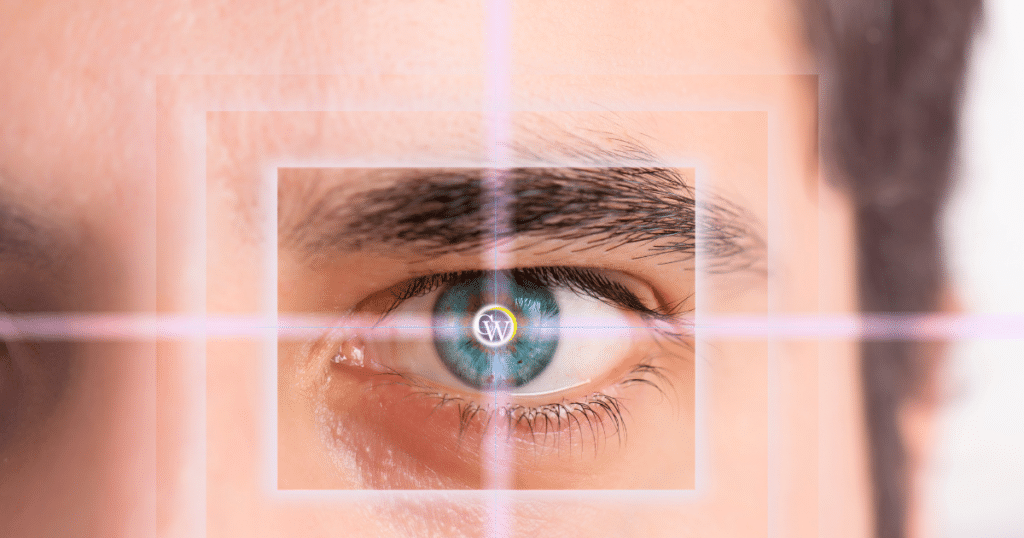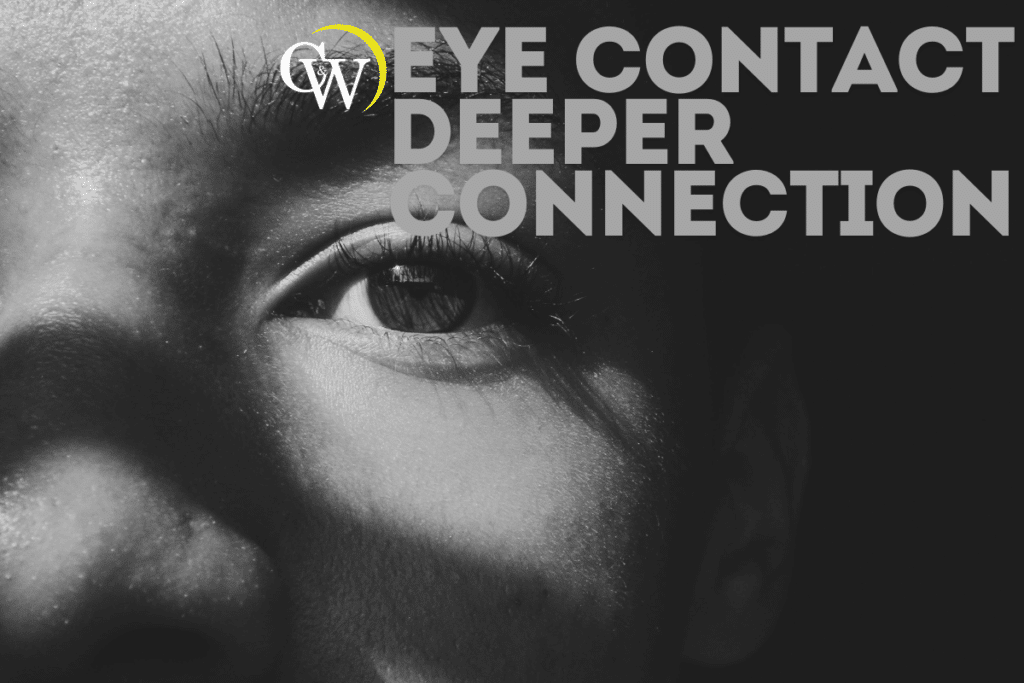As humans, we communicate with each other in a variety of ways. We use words to express our thoughts and feelings, gestures to convey emotions, and facial expressions to show our reactions and create personal connections. But one of the most powerful forms of communication is through eye contact.
Eye contact is the act of looking directly into another person’s eyes while having a conversation or engaging in any form of interaction. It may seem like a small gesture, but it can have a huge impact on how we connect with others.
When you make eye contact with someone, you are not only acknowledging their presence but also showing them that you are fully engaged in the conversation. This can make the other person feel valued, heard, and understood.
Moreover, making eye contact also helps in building trust and establishing a deeper level of connection with someone. It shows that you are being honest and sincere in your communication and that you are truly interested in what the other person has to say.
But it’s not just about maintaining eye contact during a conversation or interaction. It’s also important to be aware of the quality of your eye contact. For instance, staring too intensely or avoiding eye contact altogether can make the other person feel uncomfortable or even intimidated.
The key is to strike a balance – maintain natural and relaxed eye contact, without being too intense or avoiding it altogether. It may take some practice to master this skill, but the more you do it, the more comfortable and natural it will feel.
In addition to connecting with others, making eye contact can also have a positive impact on your own confidence and self-esteem. When you make direct eye contact, you are not only showing respect for the other person but also for yourself. It conveys a sense of assertiveness and can help boost your confidence in social situations.
So next time you are having a conversation with someone, remember to make genuine and natural eye contact. Not only will it enhance your connection with the other person, but it can also have a positive impact on your own self-confidence and relationships.

Some additional tips for making a more personal connection through eye contact:
Be aware of cultural differences
- While making eye contact is generally seen as a positive and respectful gesture, it’s important to be mindful of cultural differences. In some cultures, prolonged eye contact can be considered rude or aggressive, while in others it may be expected.
Use eye contact in different settings
- Eye contact doesn’t just have to be limited to face-to-face conversations. You can also use it during presentations, job interviews, or even when meeting someone for the first time. Just make sure to adapt your level of eye contact accordingly.
Don’t be afraid to break eye contact
- While it’s important to maintain eye contact, it’s also okay to break it occasionally. This can help prevent the conversation from feeling too intense or intimidating. Just make sure to re-establish eye contact after a brief pause.
Practice with friends or family
- If you’re not used to making consistent eye contact, try practicing with friends or family members. It may feel awkward at first, but the more you do it, the easier and more natural it will become.
Remember that making genuine and appropriate eye contact is an important part of effective communication and building strong relationships. So next time you’re having a conversation, don’t forget to make that personal connection through your eyes.
Enhancing Eye Contact Skills in Personal Interactions
Improving your eye contact skills is essential for effective personal interaction. It is a crucial component of nonverbal communication that can vastly enhance your social connections. Whether you are engaging in small talk with friends or participating in a deep conversation with your family, maintaining good eye contact can show that you are attentive and truly engaged in the exchange. As a result, you can build stronger and more meaningful relationships within your social network.
Eye Contact in Professional Communication
In today’s digital age, where video calls have become a norm, honing your eye contact skills is more important than ever. Maintaining eye contact during virtual meetings can be challenging yet essential for effective communication skills. Ensuring that you look directly at the camera, as opposed to your screen, can make the other person feel seen and heard. This simple adjustment can create the impression of direct eye contact, making your virtual interactions almost as personal and impactful as face-to-face conversations.
The Psychological Impact of Eye Contact
From a clinical psychology perspective, eye contact holds significant importance in human communication. It not only facilitates a deeper understanding of social cues but also helps combat social anxiety. People who struggle with social anxiety might find it difficult to hold eye contact, which can affect their social circles and personal interactions. By gradually practicing and improving eye contact skills, individuals can boost their self-awareness and confidence, contributing to better social connections and overall mental well-being.
Practical Tips for Improving Eye Contact
There are several practical ways to improve eye contact skills. Start by practicing with close friends or family members to gradually become more comfortable. Be mindful of the appropriate duration to hold eye contact; too little might seem disengaged, while too much can come off as intense. Additionally, observing and emulating someone who demonstrates excellent eye contact skills can be a helpful learning tool. Remember, the goal is to make your interactions feel natural and engaging, enhancing your communication across all social and professional settings.
This blog post features an interview with Stevie Bathiche, a Microsoft Technical Fellow and one of the engineers behind the unique Eye Contact technology that allows users to meet each other’s gaze as if they were in the same room, helping establish rapport and trust, and enabling greater inclusiveness across demographics.

